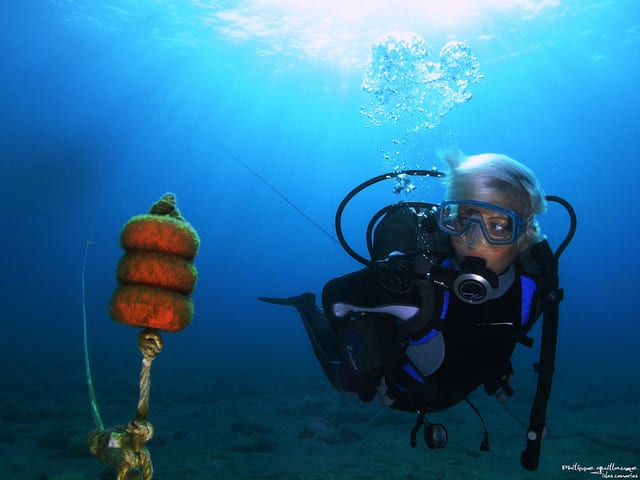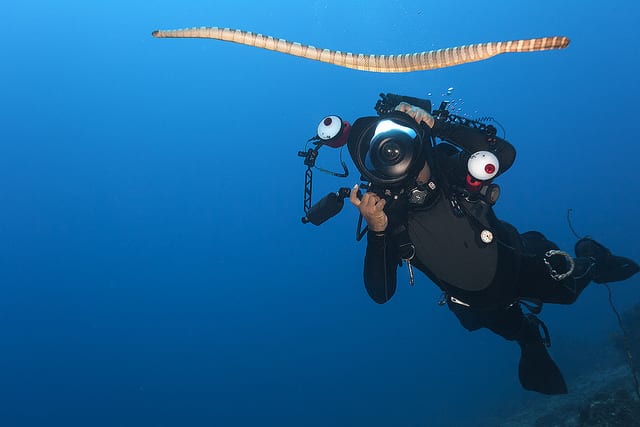
Space! It is an amazing place to study and explore, but the ocean is equally fascinating. They are both vast realms of mystery that call out for us to explore the unimaginable. Throughout history we find ourselves seeking adventure, whether it is shooting into the black space above the clouds or sailing around the world, we have always enjoyed both planes. We stimulate our minds with incredible concepts from space like the big bang, alternate dimensions, black holes, and the idea that infinite galaxies span across the cosmos which is fascinating, but what about the ocean? What kind of enchanting and mind-blowing concepts reside within this massive natural space that constantly surrounds us?
The ocean is equally just as fascinating spanning across the surface of the planet because of what we know as well. Phytoplankton can cause for the ocean to glow blue at night, marine rocks hold information about the beginning of life,the dynamics of volcanoes, gigantic prehistoric sea creatures like Megalodon and Liopleurodon, and the ocean tides bulge low and high due to the gravitational pull of the moon. We can't forget about the mysteries of the Bermuda Triangle or the ocean tales of mythical creatures which come from sailor folktales passed down for hundreds of years. These things entice fear and adventure in people all around the world. Many people fantasize over the idea of alien life, but there are actually aliens that live in the deep sea. Some of the strangest and most peculiar creatures that you would never think of are beneath us waiting to be found. Quick, to the submarine!
Where are all of the explorers?
When you look at popular literature like Moby-Dick or 20,000 Leagues Under the Sea you would think that the captivation of the ocean is received by many. Circumnavigators and voyagers have sailed the seven seas to discover the wonders of the world, and we have migrated all over the world with gargantuan vessels that can brave the unforgiving waters. However, it seems that we still understand substantially less compared to what is left to be explored. So little in fact that we have mapped less than five percent of the ocean, this includes a number of variables such as biological discovery, geography, chemistry etc… Even though 71 percent of the world is covered in water we certainly have a lot of work left to do. Only 3 people have made it all the way down into the Mariana Trench, the deepest point in the ocean compared to the 12 people who were successfully sent to the moon. This means that the potential for what can be done with ocean exploration is boundless.
So why don't we explore the ocean as much? Ryan Carlyle, a subsea hydraulics engineer who helps prevent offshore oil spills, utilizes submersible robots to help discover the proper safe zones for drilling. “No one spends more time exploring the deepest oceans than the oil industry doesâ€. Oil companies invest in exploring the ocean to find new extraction zones where they can drill for petroleum. How much do these companies invest? In regard to offshore oil rigs, the investment is 15 to 20 greater than land rigs. The least expensive model may stand at 200 million, but the average offshore rig costs about 650 million dollars, and that's just for building the rig! He also expresses that while the ocean is vast, there is not a lot to see when you are 10,000 feet down touching the floor with submersible drones. Working within an oil company, you can imagine the primary interest would be drilling for oil efficiently rather than looking for sea creatures . If you're not looking for marine life, then it is easy to assume that there is nothing around you.

However, Carlyle did mention that they would pull up some massive isopods which can grow up to 2.5 feet in length. He goes on to explain that the dynamics of exploring the deep sea is incredibly difficult, which makes the engineering measures much harder than trying to explore space. As an engineer, he states that the idea of inhabiting the deepest parts of the ocean would be virtually impossible, which makes building underwater vessels challenging. The basic laws of physics makes creating a stabilized structure underwater an incapable task with our current technology.. This is of the reasons why we don't entertain the idea of trying to live underwater compared to our colonization efforts for Mars.
So why should we explore?
Aside from wanting to know if the Kraken is real, the ocean has a lot to offer when it comes to its research potential. Oceanographers would argue that the sea is an extraordinary place to learn about. The ocean is an amazing and beautiful realm filled with biodiversity that accounts for about 30% of the evolutionary diversity known on earth . It truly is a living force that has birthed the very life of this world into existence. It is with sea exploration that we discovered hydrothermal vents in 1977 that are now being utilized as a powerful renewable energy source. Thanks to marine scientists, we also know that phytoplankton, small photosynthetic organisms, are responsible for about 50% of the oxygen produced on Earth. They are also the backbone to the food chain in the ocean providing a resource for fish and marine mammals that eventually go into human consumption.

Our oceans contribute to some of tallest mountain ranges (like Mauna Kea) that make iconic land-based mountains look measly. Due to the great work of oceanographers we now know that the Mid-Atlantic Ridge is the longest continuous mountain range expanding over 40,000 km in length. We have to give credit to the amazing trailblazers like James Cook, Sylvia Earle, James Cameron (yes, the guy who created Titanic and Avatar), and the famous Jacques Cousteau for paving the way. Due to their curiosity to explore, many achievements like James Cook mapping the entire Pacific Ocean or Sylvia Earle setting a dive record in a untethered submersible suit were achieved. These feats are nothing short of amazing and has continued to inspire many.
The NOAA (National Oceanic Atmospheric Association) has a budget of 27.3 million dollars to spend on research. Guess how much NASA has for its budget? 3.8 billion! The crazy part is that the ocean is vital to sustaining the life here on Earth. Space is a wondrous place to explore, but the ocean is here on the surface of our planet and affects our daily lives. The ocean has a direct link to the global temperatures of this planet. Acting as a conveyer belt, the ocean moves warm and cool water currents throughout the world to the northern and southern poles. This is crucial to the warming of the planet because the warmer currents gets distributed to the poles essential to maintaining the Earth's temperature.

Along with cool water moving through the tropical regions, it helps decrease the normally hot temperatures near the equator. This is important because it creates a stable climate for the organisms that flourish in that zone of the world. Solar radiation which comes from the sun is retained the most within the ocean compared to any other place on Earth. The atmosphere allows our marine system to act as a massive heat pump keeping the solar energy trapped within the world, but the funding for future ocean research is nickels and dimes next to NASA. We take great pride in being able to utilize our natural resources for our personal well being like fishing, ocean kayaking or hitting the surf. Taking advantage of every opportunity we can to enjoy the natural world around us the ocean is beneficial to everyone and we must take care of it.
Through science we have uncovered the intricacies of shallow water systems, but the deep sea still remains a great mystery. Through more funding we can implement new technology that will aid in uncovering the vastness of what is unknown in the ocean. If we can make the effort to understand the underwater world more, we can preserve it for future generations to come. Everyone should be able to enjoy the natural space of the ocean for its beauty is mesmerizing and uncomparable. We must secure it for many others to be inspired by its awe and wonder allowing for the next formation of aquanauts to take on the sea.
About the Author
 Tyus Williams is an Undergrad student at UGA studying in Wildlife Biology. He has a passion in Wildlife Conservation with goals to focus on the preservation of big cats for his career. Outside of his everyday life of science Tyus thoroughly enjoys watching anime and reading comics of classic Marvel series heroes. When he is not training in the ways of the nerd he finds enjoyment playing his guitar or enjoying the outdoors as he loves to hike and rock climb. If you would like to hear more from him, you can find him @thebraintwitch on Twitter or email him at tdw20511@uga.edu. Tyus Williams is an Undergrad student at UGA studying in Wildlife Biology. He has a passion in Wildlife Conservation with goals to focus on the preservation of big cats for his career. Outside of his everyday life of science Tyus thoroughly enjoys watching anime and reading comics of classic Marvel series heroes. When he is not training in the ways of the nerd he finds enjoyment playing his guitar or enjoying the outdoors as he loves to hike and rock climb. If you would like to hear more from him, you can find him @thebraintwitch on Twitter or email him at tdw20511@uga.edu. |
About the Author
-
athenssciencecafehttps://athensscienceobserver.com/author/athenssciencecafe/April 17, 2020
-
athenssciencecafehttps://athensscienceobserver.com/author/athenssciencecafe/April 12, 2020
-
athenssciencecafehttps://athensscienceobserver.com/author/athenssciencecafe/April 3, 2020
-
athenssciencecafehttps://athensscienceobserver.com/author/athenssciencecafe/March 30, 2020







